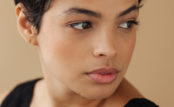 Angelina Jolie made the right choice when she had her mastectomy. She has a (relatively) rare mutation in gene BRCA1 that increases her risk of breast cancer by almost 87%. Her decision may have saved her life, considering her mother died at age 56 of ovarian cancer, which may have also loomed in the mother of six’s future.
Angelina Jolie made the right choice when she had her mastectomy. She has a (relatively) rare mutation in gene BRCA1 that increases her risk of breast cancer by almost 87%. Her decision may have saved her life, considering her mother died at age 56 of ovarian cancer, which may have also loomed in the mother of six’s future.
Yet perhaps the greater benefit from her story comes from her decision to share it with the world. Her preventative mastectomy highlights the importance of screening for a disease that accounts for roughly 23% of all cancers in women, killing close to half a million in 2008.
Breast cancer has a 90% five year survival rate in western countries when caught early, making it even more important to be aware of the disease and understand the risks and symptoms. Does breast cancer run in your family? You’re on high alert.
A mastectomy is a drastic measure, mind you. It’s not always necessary. Even when it is, you shouldn’t pursue one without complete agreement with your doctor, a counsellor, your loved ones and without considering the psychosocial implications of having your breasts removed. The key here is to understand your risk of breast cancer, if it’s genetic or not, and how to reduce your risk with early screening.
What is a Mastectomy?
A mastectomy is surgical removal of one or both breasts. Most often it’s done to treat breast cancer, either as a preventative measure or to remove an existing tumor within the breast tissue. Angelina Jolie had a prophylactic mastectomy – removal of both of her breasts – to substantially reduce her risk of breast cancer down the road.
You can accurately call this a preventative double mastectomy, or a prophylactic mastectomy.
Jolie mirrors the typical double mastectomy patient: she’s under 45, has a family history of BRCA mutations and chose to get reconstructive surgery when she finished the procedure.
Not all doctors like the procedure. Breast cancers develop in the milk ducts and lobules within the glandular tissue of the breast. Even with great care and technique, it’s impossible to remove every milk duct and lobule. And a recent study highlights that the only women who lived longer after the procedure were premenopausal women with endocrine receptor-negative breast cancers.
Still, in many women, getting a mastectomy can save a life. The same study reveals the procedure can reduce risk of breast cancer by up to 100% in women with BRCA mutations, like Angelina Jolie, or have a well-documented history of breast cancer in the family.
mutations, like Angelina Jolie, or have a well-documented history of breast cancer in the family.
Who Should Consider A Mastectomy?
The Society of Surgical Oncology advises that only women at high risk of breast cancer should consider getting a mastectomy. Specifically, that’s women with BRCA mutations, previous cancer in one breast and a strong family history of breast cancer, or a history of lobular carcinoma in situ (LCIS).
A preventative mastectomy should only be pursued once you’ve had appropriate genetic and psychological conditioning too. A mastectomy is intrusive, after all, and the idea of spending decades without breasts can be traumatic for many women. BRCA mutations aren’t common, and account for only 5% of female breast cancers – Angelina Jolie at risk of being among them.
In other words, if there’s another way to reduce your risk of breast cancer, like screening with an MRI or mammogram each year in women over 40, that’s probably a better option. And it’s yet another reason to get your regular check-ups and maintain an ongoing communication with your physician.
The Society of Surgical Oncology advises that only women at high risk of breast cancer should consider getting a mastectomy.
Fortunately, the mastectomy procedure continues to improve. It’s now possible to use skin-sparing techniques that remove the breast tissue from under the skin down to the chest wall. This gets the vast majority of glands where breast cancer develops and removes the nipple and surrounding tissue but spares the breast skin envelope.
You’ll most likely get best results with breast reconstruction immediately after the mastectomy. And while reconstructive surgery shouldn’t be advocated for all mastectomy patients, it may help restore self-esteem in many women.
Testing For BRCA Mutations
BRCA mutations are linked to an aggressive form of breast cancer called a triple negative. Both breasts are at risk of cancer in this scenario, meaning that both will be removed if the patient does a mastectomy.
Experts contend that women should consider BRCA testing if they’ve:
had a triple negative breast cancer under age 45
a family history of ovarian and breast cancer
a family history of breast cancer and are of Askenazi Jewish descent
Note there are other ways to screen for and treat a triple negative breast cancer other than with a mastectomy. You can screen with a mammogram and breast MRI, either alternating every six months or performed at the same time. Both options work, breast surgeon Shelley Hwang MD told WebMD – so long as you do both procedures in one calendar year annually if you have a BRCA mutation.
BRCA testing can be done several ways, the easiest being a blood test or swab to the inside of your cheek. Have this done after consulting with a genetic counsellor, who can speak with you about the possibility of testing positive, what it means and your options from there.
 Your doctor can probably refer you to a genetic counsellor. Alternatively, go to the National Society of Genetic Counselors.
Your doctor can probably refer you to a genetic counsellor. Alternatively, go to the National Society of Genetic Counselors.
If you’re looking for a more thorough test (basic testing only tests for the three most common BRCA mutations), you can do gene sequencing. This costs about $3000 but many insurance companies offer coverage for patients deemed ‘high risk’.
The American Cancer Society recommends women without breast symptoms do a mammogram each year after 40 and continue doing so as long as they remain in good health. High risk women, defined as 20% or greater lifetime risk should do a breast MRI each year too, though yearly MRI testing is not recommended for less than 15% risk.
Prevention of Breast Cancer With Lifestyle Factors
Angelina Jolie was at risk of genetic breast cancer from a mutated gene BRCA1. These are risk factors beyond her control. If your family has a history of breast cancer, especially at a young age, you’d do well to follow her lead. Stay alert, stay positive. And keep an eye on your health.
Now, for some good news. Evidence suggests that breast cancer is, in many cases, a product of lifestyle. You might reduce your chance of breast cancer with healthy habits and lifestyle tips courtesy of the Fred Hutchinson Cancer Research Center. As a bonus, you might thwart heart disease, diabetes and other health concerns that sometimes end in unfortunate ways
Healthy Weight Management – Obesity increases risk of just about every major health concern you can think of, from diabetes and heart disease to joint problems and breast cancer. Aim for a body mass index (BMI) between 20 and 25 and maintain it over time. Go here to calculate your BMI.
Eat Lean, Nutrient-Rich Foods – Swap refined carbohydrates and fatty foods for lean proteins, like fish and chicken breast, whole grains and nutrient-rich fruits and vegetables. Try to avoid red meat too, because studies link it to several diseases, including colon and breast cancer. Check WebMD’s list of cancer-fighting foods for more information.
Stay Physically Active – We’re trying to keep you in top form here, with your diet choice and BMI under 25. Now let’s get physical – studies show a beneficial effect between regular exercise and cancer prevention. It’s never too late to start either. Just a brisk 30 minute walk five times a week could lower your risk by up to 30%.
Moderate Alcohol Consumption – Alcohol increases risk of breast cancer. Women should limit alcohol consumption to one beverage each day.
 Avoid Hormone Replacement Therapy – Studies are back and forth on whether HRT can increase risk of breast cancer. We do know it can increase risk of other health concerns, endometrial cancer and heart disease among them, meaning it can’t hurt to avoid HRT, or try natural alternatives to HRT instead.
Avoid Hormone Replacement Therapy – Studies are back and forth on whether HRT can increase risk of breast cancer. We do know it can increase risk of other health concerns, endometrial cancer and heart disease among them, meaning it can’t hurt to avoid HRT, or try natural alternatives to HRT instead.
Don’t Smoke – Need another reason to quit the habit? Research links smoking to higher risk of breast cancer in some women.
Breast Feed As Long As You Can – Women who breast feed their babies for at least a year have a lower incidence of breast cancer later in life.
Breast Cancer and You
Angelina Jolie made an intelligent decision with her recent mastectomy. She’s now in a better position to avoid the cancer that took her mother, and her example highlights the dangers of a serious health concern that claims hundreds of thousands of lives each year.
What does this mean to you? Know your risks. Jolie was an exceptionally high risk because of a gene that affects roughly 5% of women. While it’s not impossible you’re among them – and should consider BRCA testing if the women in your family have a history of breast cancer, especially below age 45 – you’ve probably got control over your risk factors for breast cancer. That’s a good thing to have.
A final thought to leave you with. Jolie’s mastectomy sheds light on a serious health threat to women. Follow her lead and learn more about breast cancer. National Breast Cancer Awareness Month and the Fred Hutchinson Center’s annual Climb to Fight Breast Cancer are two good ways to get active, take a stance and play an important role in how to fight a disease that takes far too many lives.




